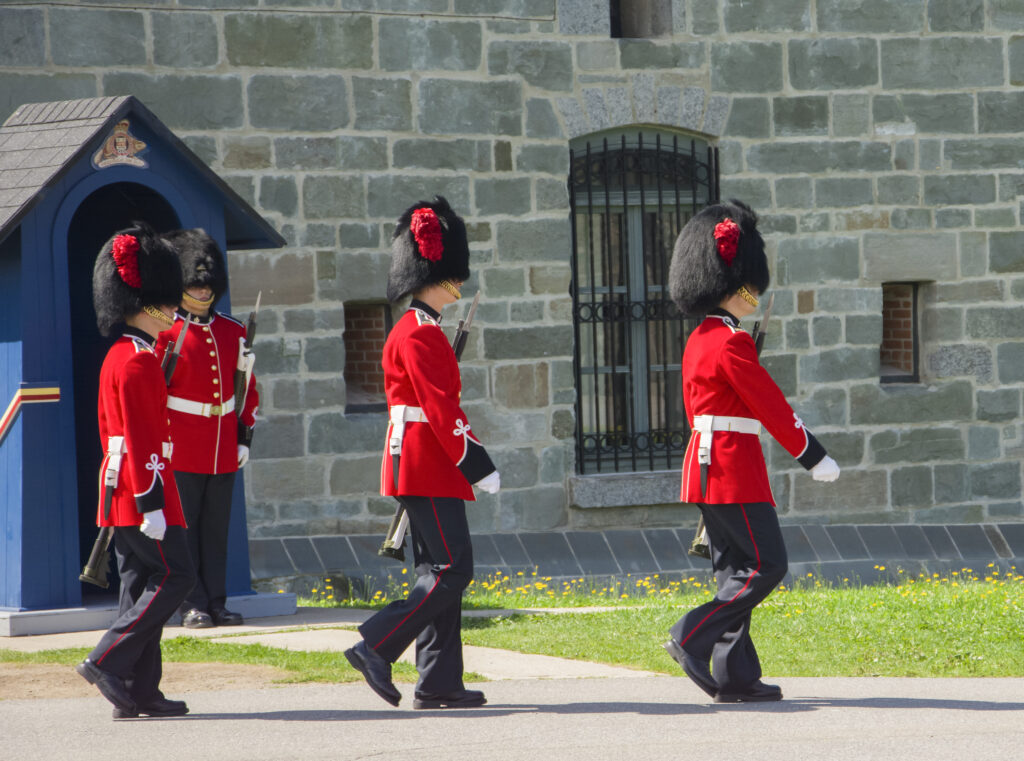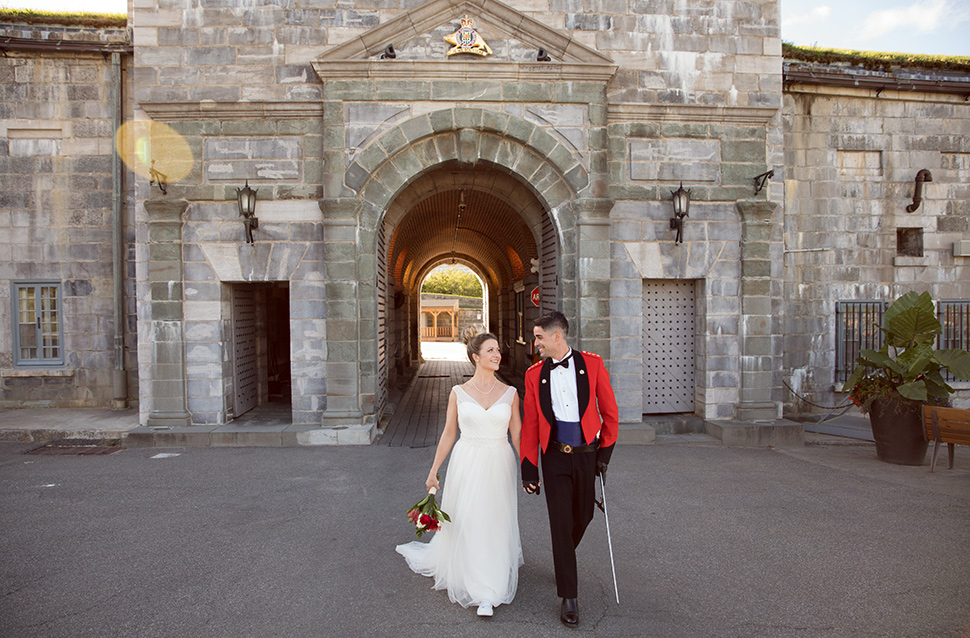History of the Citadelle of Quebec
The origins of the Citadelle of Québec
La Citadelle de Québec, nicknamed the “Gibraltar of America”, is a historic military fortress located in Quebec City, Canada. Construction began in 1673 under French rule, to protect the city from enemy attack. Louis de Buade, Comte de Frontenac, was the initiator of this ambitious project. Initially, the citadel was a simple palisade of wood and earth, insufficient to withstand a prolonged attack.
Transformation under British influence
After the British conquest in 1759, Québec became a British possession. In 1820, the British began rebuilding the Citadel of Quebec to strengthen the city’s defense against the United States. This colossal project, completed in 1850, transformed the citadel into an imposing fortress. The British built thick walls, bastions and stone barracks, making the citadel virtually impregnable. The citadel’s design was inspired by the fortification principles of French military engineer Sébastien Le Prestre de Vauban, adapted to the new technologies and needs of the time.
Architecture of the Citadelle
La Citadelle de Québec covers 37 acres and includes many historic buildings still in use today. Among the most notable structures are the barracks, powder magazine, artillery magazine and the residence of the Governor General of Canada. The citadel is designed in the shape of a star, a typical feature of Vauban fortifications, providing optimal defense against assault.
The Citadel and military conflicts
Throughout its history, the Citadelle of Québec has played a crucial role in several military conflicts. During the War of 1812, the threat of an American invasion prompted the British to reinforce the fortress considerably. Later, during the rebellions of 1837-1838, the citadel served as a refuge for British troops and as a command center for the suppression of insurrections.
The Citadel in the 20th century
In the 20th century, the Citadelle continued to play an important military role. It became the headquarters of the Royal 22e Régiment, a French-speaking infantry unit of the Canadian army. During both world wars, the citadel was used as a training and mobilization center for troops. It also served as a strategic point for the defense of Canada during the Cold War.
The Royal 22e Régiment and La Citadelle
The Royal 22e Régiment, also known as the “Van Doos”, was created in 1914 and has occupied the Citadelle of Québec ever since. This prestigious regiment, composed mainly of French-speaking men, took part in numerous military campaigns, including the two World Wars, the Korean War and various peacekeeping missions. The regiment’s presence at the citadel has enriched the history and heritage of this fortress.

La Citadelle: A Historic Monument and an Official Residence
In addition to its military role, La Citadelle de Québec is also the official residence of the Governor General of Canada when he is in Quebec. This tradition began in 1872 and continues today, adding a ceremonial and symbolic dimension to the citadel. The Governor General uses the citadel for various official functions and state ceremonies.
La Citadelle and the Second World War
During the Second World War, the Citadelle of Quebec played a crucial role as a military planning center. In 1943, it hosted the famous Quebec Conference, where Allied leaders including Winston Churchill and Franklin D. Roosevelt met to discuss wartime strategies. This historic event reinforced the citadel’s importance as a key strategic site.
La Citadelle Today
Today, La Citadelle de Québec is a major tourist attraction and a living museum of Canadian military history. It welcomes thousands of visitors every year, offering guided tours, exhibitions and special events. Visitors can explore the historic buildings, admire panoramic views of the St. Lawrence River and watch the Changing of the Guard, a traditional military ceremony.
The Royal 22e Régiment Museum
The Royal 22e Régiment Museum, located in the heart of the citadel, features artifacts, documents and exhibits recounting the history of the regiment and the citadel. The exhibits cover several historical periods, from the regiment’s creation through the two world wars to its contemporary missions. The museum offers a fascinating insight into Canada’s military past and the evolution of La Citadelle de Québec.
Events and Activities at La Citadelle
La Citadelle de Québec is also the venue for numerous cultural and commemorative events. In summer, the citadel hosts concerts, military ceremonies and festivals. Visitors can also take part in historical re-enactments, evening tours and educational workshops. These activities enrich the visitor experience and provide a better understanding of the citadel’s historical and cultural significance.
La Citadelle: A World Heritage Site
In 1985, La Citadelle de Québec was inscribed on UNESCO’s World Heritage List as an integral part of the historic site of Québec. This international recognition underscores the Citadel’s importance as an exceptional testimony to military architecture and colonial history in North America. The citadel is a symbol of Québec City’s resilience and cultural diversity, attracting visitors from all over the world.

Conclusion
The Citadelle of Québec, with its imposing walls and rich history, remains a symbol of Canadian pride and defense. Its transformation over the centuries, its role in military conflicts and its place in Canadian history make it a site of inestimable importance.
To visit the citadel is to immerse yourself in the country’s military history and discover the fascinating stories of those who defended its walls.
Thank you for reading. If you have any questions or would like to book your stay, please visit www.bnbquebec.com or call (418) 692-0316.
See you at the next blog!
